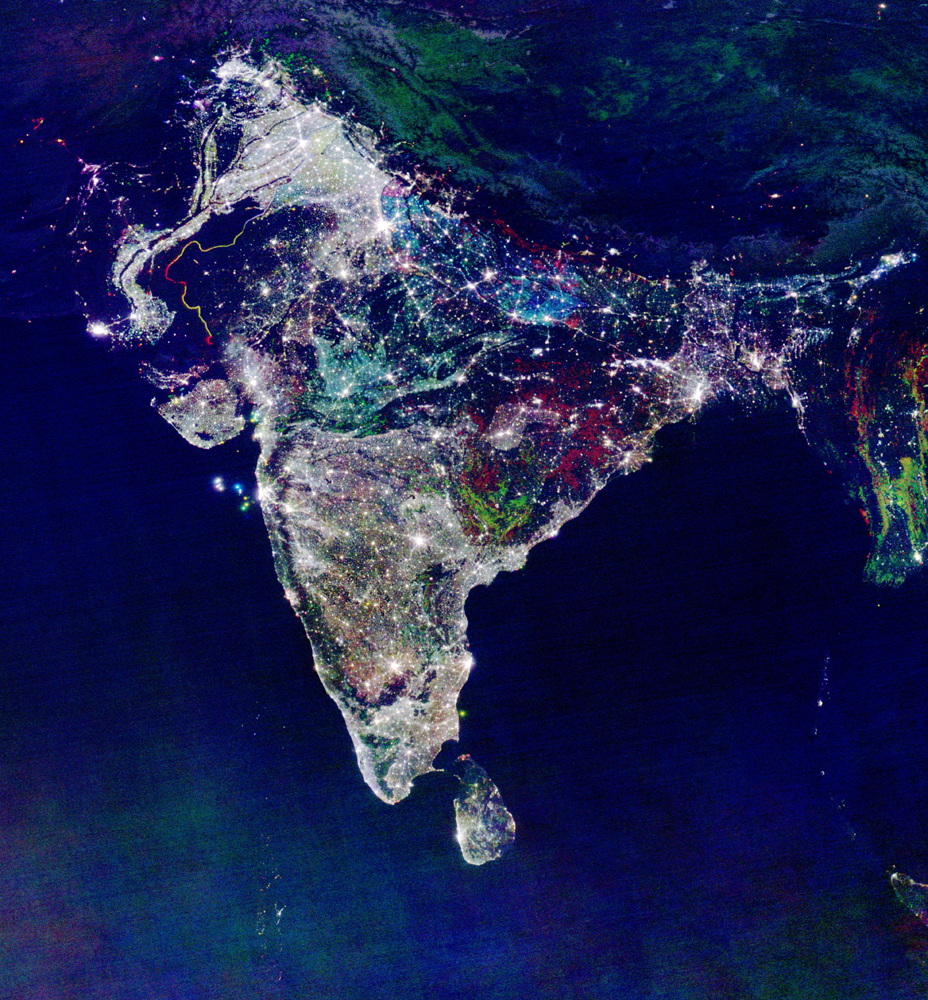The Anatomy of India's Power Outage

The blackout that blanketed India earlier this week was one of the largest of its kind in history. Some 670 million people went without power in an area stretching across northern India.
Details are still sketchy, but the incident has raised questions about whether a similar event could happen in the United States.
BIG PICS: Wind Power Without The Blades
The U.S. electrical grid is pretty robust. Nobody expects power to go out on a regular basis. But there are still situations that can cause major failures, and the interconnected nature of the electrical grid means a problem in one place can be far-reaching.
"Our grid is just one big machine," said Steven Greenlee, a spokesman for the California Independent System Operator Corporation, which manages power distribution across most of the state.
The total amount of energy on a network is constant, and the voltage and current are related. They also have to be kept at certain levels. Another wrinkle in alternating current systems is that generators all have to run in sync with each other.
All this means that the loads on the equipment transmitting power have to be balanced. Too much demand in one area pulls more current through the system and drops the voltage. But running more current has another effect: Equipment heats up. The power lines, substations and everything else that make up the grid are all designed to operate up to a certain temperature.
Get the world’s most fascinating discoveries delivered straight to your inbox.
In a home, circuit breakers are all designed to trip when they get too hot. In old systems, fuses blow out, with a small piece of metal inside melting and breaking the circuit, but also preventing fire. Putting pennies made of copper in place of these pieces allows current to flow, but does nothing to protect wires or appliances from overheating.
In an electrical grid, if there is a voltage drop on a transmission line -– for example, a tree falls on it -– then the load has to be rebalanced. Power is re-routed to lines that are still up. But that places an extra load on them, since the total amount of energy in the system is the same. If enough lines go down, then power grids are designed to automatically reduce their load by shutting down the power to those areas.
NEWS: Could A Smart Grid Curb Blackouts?
Similarly, if there is too much demand from one area, load reduction can be achieved by essentially cutting off customers in some places. Alternatively, the voltage in other areas can be lowered, a "brownout."
Sometimes generating plants can register an increased load because current is still flowing through a line when something hits it. For example, if a tree falls on a line, it may create a path for current, acting like a giant resistor. The generation plant detects that as an increased load, and starts producing more power to meet the "demand."
Once a power outage happens -- say a transmission line has to be shut down -- crews are sent out to investigate.
Clark Gellings, a fellow at the Electric Power Research Institute, noted that customers usually don't need to be cut off. Most utilities can see high demand coming days ahead of time.
"You could cut some load with incentives to big industrial users," he said.
Those users will agree not to run machinery at a certain time. When a hot day comes along and drives thousands of people to turn on air conditioners in New York City, most utilities in the area have made arrangements to import more power from outside.
Gellings said he isn't sure yet what happened in India, but it's possible that operators overcompensated. When they saw there was a problem, they cut power to a much wider region than was necessary to keep the equipment working.
"But it's all speculative," he said. "We don't really know."
So could a repeat of the major blackout on the scale of what India saw this week happen in the United States? It's less likely. Greenlee noted that CalISO recently built a state-of-the art control room that gives operators a lot of information in real-time. That way they can deal with problems before they spread.
NEWS: Energy Grid: Safe From Cyber Attack?
One technology, for example, is the "synchrophaser." The device measures current and voltage going through a line and sends data back dozens of times every second.
"They take a snapshot of line health and talk to both the control room and each other," Greenlee said.
That extra data allows operators to fine-tune both the loads and see where problems might happen.
Gellings said there are a lot of data acquisition systems that are now in place in other regions as well. And even older systems can go a long way toward preventing a large-scale blackout.
This story was provided by Discovery News.



